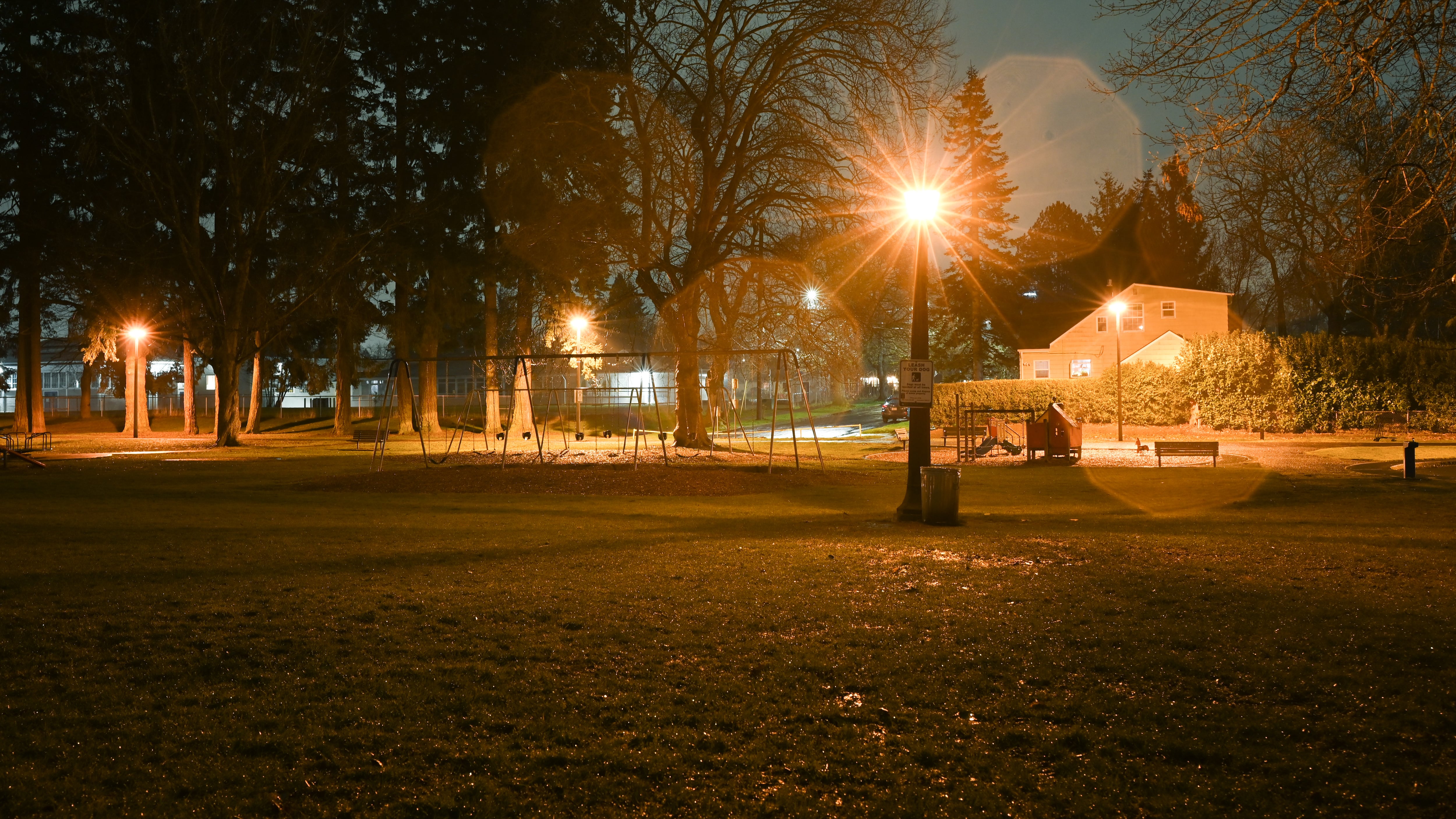Two months before his death from cancer, City Commissioner Nick Fish issued a warning about Portland’s most cherished gems: its parks.
It was November 2019, and a grizzled Fish—who joked that he hadn’t shaved that morning because he was so excited to talk about parks—described a dire financial situation at Portland Parks & Recreation. The bureau was rapidly expanding, but lacked the resources to maintain its existing properties.
If funding didn’t increase, Fish warned, the city would need to stop building new parks—or it would have to begin to close those it already had.
He used the beloved Columbia Pool in North Portland as an example. The city had warned it might need to shutter the indoor pool—temporarily, it promised—because of a shortfall in the parks bureau’s operating budget.
“How on earth can we be contemplating a new pool if we can’t maintain an existing pool? There is a contradiction, and I do want everyone to understand that,” Fish said. “Here we are talking about our inability to maintain Columbia Pool, but at the same time we’re talking about building a state-of-the-art pool. It’s one of the structural problems that continues to hold us back.”
Four years later, the bureau is under new direction—by City Commissioner Dan Ryan—and still trapped in the paradox Fish described.
In 2019, the deferred maintenance gap—that is, the cost to repair all the deteriorating infrastructure across the city’s parks—was $450 million. It is now $600 million.
The core problem is unchanged: The parks bureau has funds to build new facilities, but can’t afford to operate and maintain existing ones. In fact, nearly half of the bureau’s $498 million budget last year—$241 million—could only be spent to expand existing infrastructure or build new facilities. (And much of that is already committed to projects.) State law binds how certain parks revenues, such as one-time charges paid to the city by developers for new construction, are used. So the gap keeps growing.
Meanwhile, it’s rumored that Ryan is also mulling a run for mayor, and would like to be able to show voters a track record of achievements.
Which explains why the city is doing exactly what Fish warned would happen: planning to build a $50 million aquatic center in North Portland even as it plucks unsafe light poles out of nearby parks.
Former City Commissioner Amanda Fritz says that’s the logical outcome of a conversation about parks funding that died with Fish.
“I don’t think we had the capacity to look into what Nick had suggested,” she says now. “And then we were in the pandemic. It was a series of events that couldn’t have been foreseen or helped. And that conversation just dropped.”
The conversation Fritz describes intensified in 2019, after a budget shortfall that led to layoffs and shuttered community centers. WW examined the problem that summer in a cover story (“Parks and Wreck,” July 17, 2019).
Four months later, a Parks & Recreation staffer explained to the City Council that it would have to find more funding or watch existing assets crumble.
“In that scenario, because our operating gap will continue over time, we will see declines in our daily maintenance of the parks,” Sarah Huggins solemnly told the council. “We could be looking at closing 1 in 5 assets in the next 15 years….Without additional operating dollars, our entire system will see service cuts to accommodate the needs of the new parks.”
Fritz called that future unacceptable.
“Could we just take scenario one off the table right away?” Fritz said, to applause from the gallery. “I can’t imagine being the council that would preside over the demolition of Portland’s parks. For me, it’s not whether to fund our parks system properly, it’s how to fund it properly.”
Since then, the parks bureau has been in the portfolios of three different commissioners: Mayor Ted Wheeler, Commissioner Carmen Rubio and now Ryan. And the maintenance backlog has grown by another $150 million.
Mark Ross, a spokesman for parks, says Ryan and the bureau are keenly aware of its financial distress and are exploring ways to decrease the funding gap. (Ryan co-signed the bureau’s responses to WW’s questions.)
“The parks system has been significantly underfunded for decades, and those public assets are aging. In recent years, a number of assets have failed and had to be closed or removed to protect the public,” Ross says. “[Parks] continues to work with Dan Ryan about supporting maintenance at the levels needed to prevent future closures.”
In February of this year, the parks bureau announced it had begun removing 243 light poles from 12 city parks due to structural deficiencies found in their concrete bases. (The city commissioned an assessment of the poles after a woman strung her hammock between a light pole and a tree and the pole fell over, badly crushing her legs.) Only two parks would get new lights—in 16 months’ time.
The bureau said it had no money to replace the lights in the other 10 parks, citing hundreds of millions of dollars in deferred maintenance.
Ryan and the parks bureau received intense backlash over the light pole removals this spring. In late March, the bureau abruptly halted the removal less than a month after it had started tugging the poles out of the ground. The city had uprooted 116 light poles. The City Council scrambled to find the $11.5 million necessary to eventually replace the lights, securing some funding from the regional government Metro and setting its sights on another couple of million from the federal government.
To reduce its legal liability of a light pole injuring someone, the city made it clear that it was unlawful to attach anything to light poles in parks. (It’s unclear why the city didn’t see this as a viable solution sooner.)
“The bureau heard from the community,” spokesman Ross says, “that darkened parks represented a higher safety priority.”
It will be another five months before the uprooted light poles are replaced.
But while 12 parks were well on their way to lights out, the city was planning a $50 million aquatic center in North Portland. Its aim: to provide much-needed water access to communities of color in North Portland, who’d long been without a public pool on hot days.
The Oregon Legislature had just passed twin bills, championed by Rep. Travis Nelson (D-Portland), that allocated $15 million to the future center. In the two years before, Commissioner Rubio had pledged $16.7 million in system development charges to the future pool.
Meanwhile, the only remaining pool in North Portland had been shuttered by the parks bureau in 2020 due to structural deficiencies. Neighbors were irate and said they didn’t understand why it made more sense to build a new pool that wouldn’t be ready for another decade, when the city could just fix an existing pool.
System development charges—fees paid to the city by developers—can only be used for new projects, such as to build new parks. Much of the $241 million available only for capital projects in the parks budget last year came from years of built-up revenues that the city couldn’t spend as quickly as it collected them. (Though much of that accrued money is already budgeted for specific projects.)
That befuddled onlookers. “The sentiment was a little bit like, why are we spending all this money on this massive center—wouldn’t it just be cheaper to fix what we already have?” says Megan Ewing, who often swam at the Columbia Pool. “How are they going to keep it maintained? Because clearly they couldn’t maintain the Columbia Pool.”
Rep. Nelson, who secured the state funding for the aquatic center, also tried to pass a bill this session that would have allowed Portland to create its own parks district. But the bill died in committee, opposed by the Special Districts Association of Oregon and Tualatin Hills Park & Recreation District in eastern Washington County. (The former argued a new parks district could open the floodgates for tax-happy governments; the latter argued it would be a tool easily abused by the City Council, which would oversee it.)
The parks bureau, in conjunction with Ryan, says it’s explored a variety of funding mechanisms, including a voter-approved ballot measure for capital funding, a new request for more city dollars, a campaign for private donations, and a reallocation of existing bureau resources. Ross says the bureau will not pursue a parks bond measure this year, nor is it actively working on a private fundraising campaign.
Fritz says she’s disappointed the parks bureau now finds itself in the one scenario that she and her City Council colleagues brushed off in 2019 as impossible. “Whether it’s this council or the new council,” Fritz says, “someone is going to have to figure this out.”

